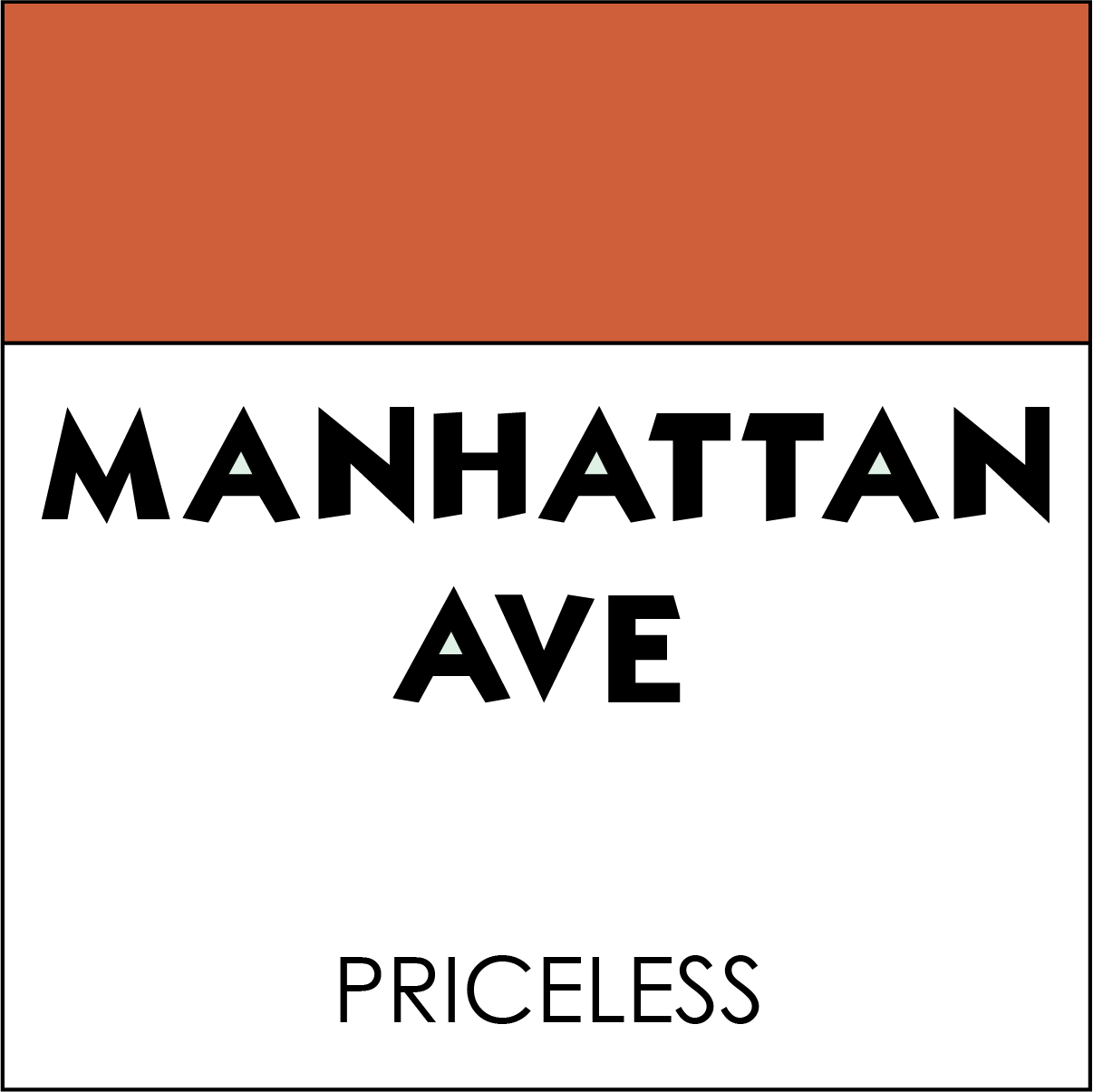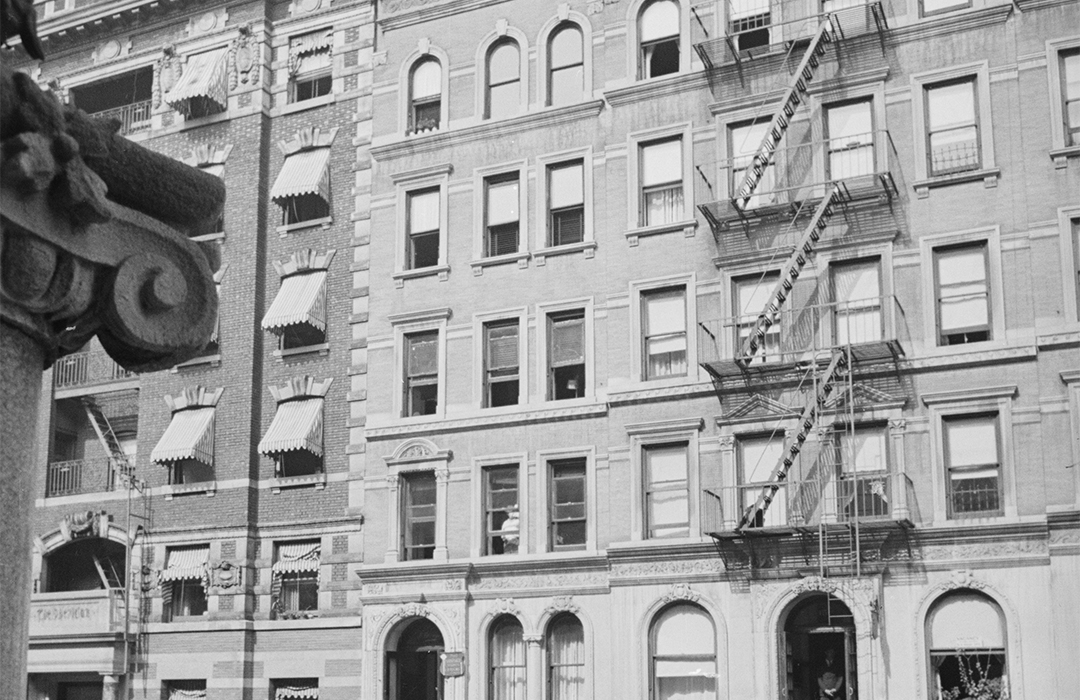
11 Manhattan Avenue
by Tom Miller
On March 13, 1897, the Record & Guide reported that developer William Rankin would be erecting “four five-story brick and stone flats” at the southwest corner of Manhattan Avenue and 101st Street. Designed by James Cole, the project would cost Rankin $100,000, or about $3.79 million in 2025. Interestingly, while the other three buildings were 27-feet wide, 11 Manhattan Avenue would be substantially narrower at just 19-feet wide.
The basement and first floors of the Renaissance Revival-style structure were faced in limestone, and the upper four floors in brick and trimmed in stone. The building also differed from the others in its asymmetrical design. The entrance above a stone stoop, for instance, sat to the side. Nevertheless, Cole carried out the motif of the other buildings into the design of 11 Manhattan Avenue.
The apartments contained either seven or eight rooms and a bath. An advertisement boasted, “all improvements; steam heat; hot water supply.”
Rankin sold the building to real estate operators Joseph and Rachel Axelrod, who would be among its initial residents. They were born and married in Russia. When they moved into 11 Manhattan Avenue, their only child, Annie, was 16 years old. Like Rankin, the Axelrods erected “flat buildings,” and in 1899 completed the two upscale structures at 306 and 308 West 93rd Street; and in 1900, built a seven-story brick flat at 92nd Street and Broadway.
Two little girls, one of whom was eight-year-old Sarah Morrissey, were playing in the street.
On the night of June 28, 1899, the building’s janitor alerted a bicycle policeman named Shea that a burglar had just fled from the Axelrod’s apartment. Policeman Shea caught up with Charles O’Donnell as he attempted to scale the Central Park Wall at 93rd Street. Carrying “a bundle of stolen clothing in his arms,” as reported by The Sun, O’Donnell unsuccessfully tried to escape through the Park underbrush. The burglar had carried off $50 worth of clothing, but “overlooked a valuable diamond pin, which was lying on a table in the room he entered,” said the article.
Among the initial residents was 28-year-old John Connors, a gripman for a cable car company. (The term referred to the person who starts and stops the vehicle.) On the afternoon of October 9, 1898, as Connors’s car was traveling on Amsterdam Avenue toward 113th Street, he saw a terrifying sight. Two little girls, one of whom was eight-year-old Sarah Morrissey, were playing in the street. The New York Times said, “There is a steep hill at that point” and Connor’s cable car “was coming down the incline at a rapid rate.” Connor attempted to apply the brakes, but he was too late. The car struck Sarah and the wheels passed over her body. The New York Times reported, “It was necessary to jack up the car before the body could be extricated.” The little girl was dead. Connor was arrested for what today would be termed negligent homicide.
The residents of 11 Manhattan Avenue continued to be middle class. Living here in 1907 was Robert Horn, who managed a garage, and around that time, Marie Lucie Segard moved in. Marie, who was employed as a hat designer, was born in France in 1878 and moved to America in 1898. Never married, she died in her apartment on March 14, 1913, at the age of 35.
A colorful resident at the time was Charles Gondorf, who listed his profession as a clerk. To police, however, he was known as the King of the Wire Tappers, according to the New York Herald on September 22, 1914. “Wire tapping” was a form of swindling by which victims were led to believe they would make large windfalls by betting on horse races. The New York Times said Gondorf, “has been arrested many times in many different places, but had never faced a jury.” That was because Gondorf intimidated his victims and bribed them not to testify. The newspaper said he had been arrested “for grand larceny, receiving stolen goods, assault, and robbery” but had never faced a jury.
One of the large apartments became the de facto headquarters of the newly organized Associacion Puertorriquena
In July 1914, Eugene Adams complained to police that Gondorf had swindled him out of $4,000. Detectives told Adams that Gondorf would attempt to buy him off. And sure enough, Gondorf gave Adams cash “to go to Canada,” telling him “it would be useless to testify” because Gondorf “had as friends political leaders who could fix the District Attorneys and even the Judges.” At his trial, said The New York Times, “So confident was he of a favorable result that he did not even offer a defense.” But then, Eugene Adams entered the courtroom and testified. The jury found him guilty, and he was sentenced to five to ten years in State Prison.
One of the large apartments became the de facto headquarters of the newly organized Associacion Puertorriquena in 1919. On December 1, The Sun reported, “The Porto Rican Association gave a dance at 11 Manhattan avenue last Saturday, Nov. 29. A Porto Rican orchestra and American musicians played select pieces and a large number of Porto Ricans and Latin Americans attended the festivity.”
On July 23, 1946, the Long Island City Star Journal reported, “Mr. and Mrs. Albert J. Harth have returned from a wedding trip to New Hampshire and are living at 11 Manhattan Avenue, Manhattan.” The newlyweds would be among the last to sign leases in the building. Six years later, the city approved the massive Frederick Douglass Houses project. The renewal program would replace all of the buildings from 100th to 104th Street and from the east side of Amsterdam Avenue to the west of Manhattan Avenue.
Tom Miller is a social historian and blogger at daytoninmanhattan.blogspot.com


